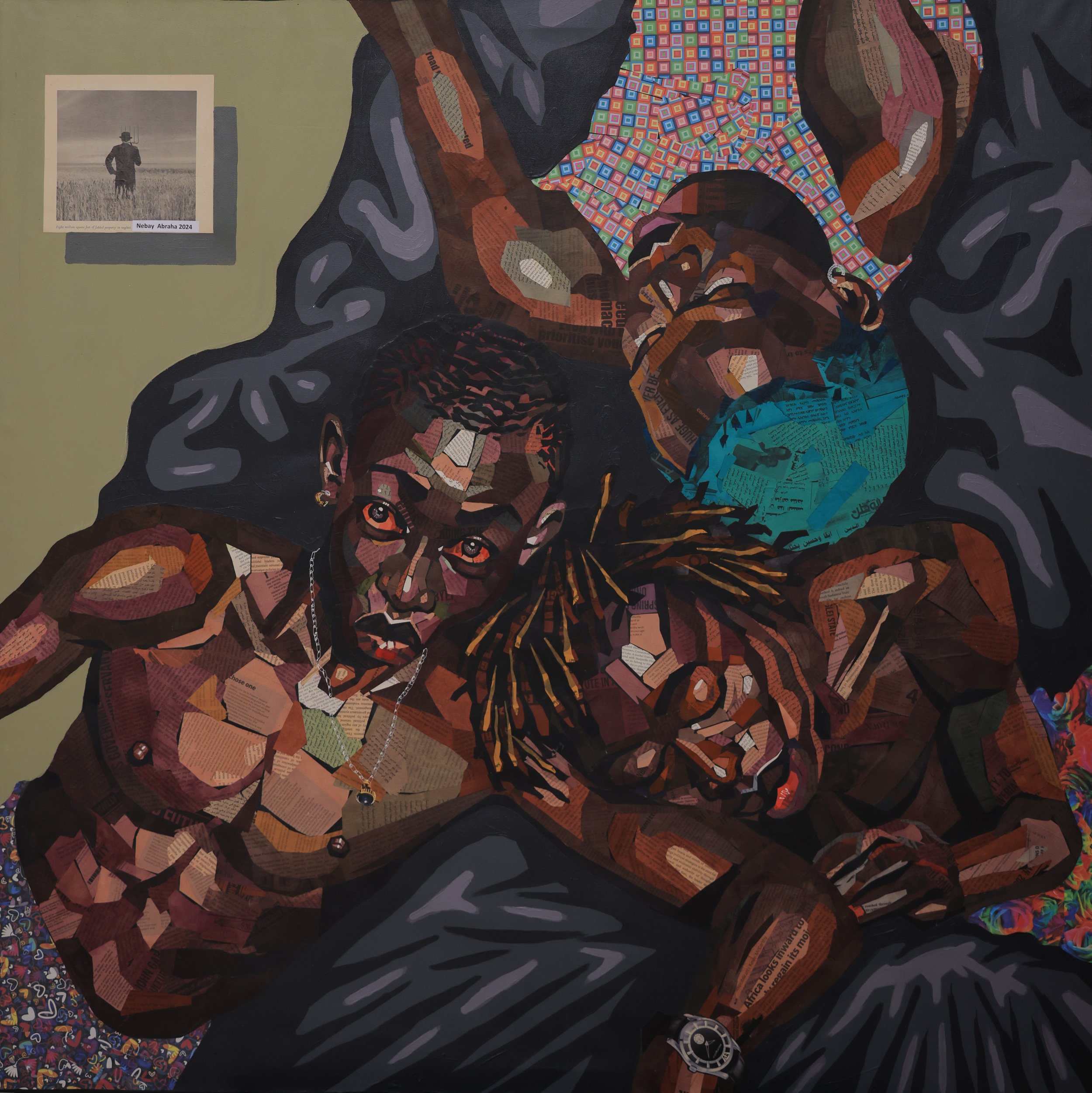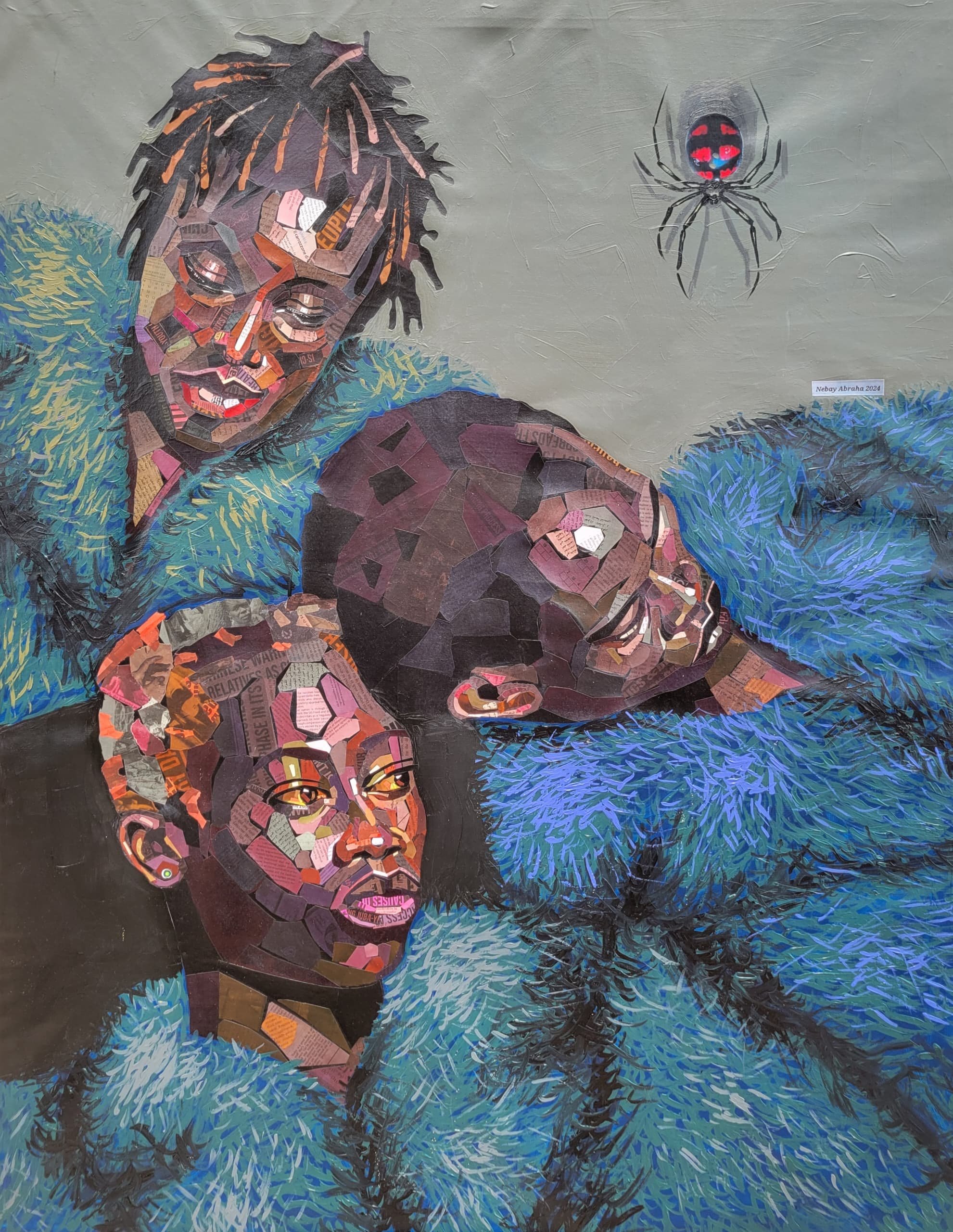. Nebay Abraha
Visual Artist | Born 1996
Nebay Abraha is a self-taught visual artist born in Eritrea in 1996, celebrated for his emotionally resonant portraits and layered mixed-media collages that explore migration, memory, and identity. Utilizing recycled newspapers, found papers, charcoal, and acrylic, Nebay creates figurative works that give voice to the inner lives of displaced individuals and immigrant communities.
His journey as an artist began in Asmara, Eritrea, where he co-hosted two exhibitions in his teens that sparked his commitment to a life in art. He later received a Certificate in Fine Art from the Satreb Art Institute (2014–2017). In 2018, Nebay relocated to Addis Ababa, Ethiopia, where the experience deepened his artistic vision. His breakthrough came in 2019 with Ethio-Eritrea, a collaborative exhibition with Ethiopian artist Berhan Beyene at the Fendika Cultural Center.
In 2020, Nebay moved to Juba, South Sudan, where he continued producing and exhibiting work that bridges his personal story with universal themes of belonging and resilience. He has exhibited widely across East Africa, including in Nairobi and Kampala, and more recently, expanded into the U.S. art scene.
In 2025, Nebay exhibited at the San Francisco Art Fair, a significant milestone marking his introduction to the West Coast art world. He has also showcased his work in Oakland, California, continuing to build cross-cultural dialogues through his art. Today, his works are held in private collections around the world, including in Africa, Europe, North America, and the Middle East.
“When I create, I think of the silence people carry—the feelings they can't say out loud. I want my art to speak for those emotions hidden in the corners of migration, love, and loss,” Nebay explains.
His current work continues to center on the lived experiences of immigrants, often addressing themes such as loneliness, identity fragmentation, cultural prejudice, and the search for joy and community in unfamiliar places. Through the act of recycling and layering, his artistic process mirrors the emotional reconstruction many immigrants undergo.










